© 2025 Powered by Antbuildz.com
© 2025 Powered by Antbuildz.com
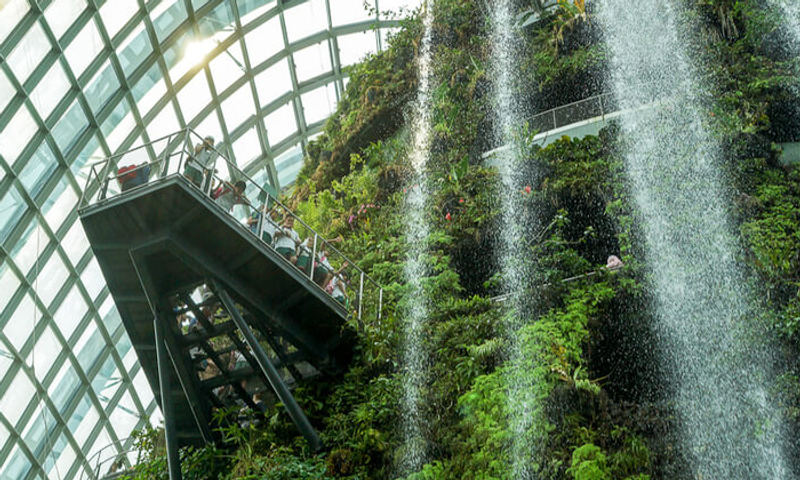
With 80% of the time spending indoors, it becomes more and more important to ensure our indoor environment is a healthy space. This is even more necessary as buildings become increasingly air-tight and ventilation systems become closed-loop as people rely increasingly on air conditioning in the summertime. This closing up of the buildings comes at a price indoor air quality reduction due to emissions from various sources indoors and nowhere for them to go with the window closed.
The term "building ecology" has been coined to describe the interaction between building environments and their occupants. A healthy building is one that does not adversely affect the health of its occupants or the larger environment and an integral factor in this interaction is the indoor air quality of a building or home.
As we all know, plants are the lungs of the earth. They produce the oxygen that makes life possible and absorbs the toxic contaminants. And the color green can relax your eye muscle and comfort your eyes after a long period of working. Therefore, greenery performs essential functions indoors with the same efficiency as a rain forest in our biosphere. In past research, it shows that indoor greenery is the best filter of common pollutants such as formaldehyde, ammonia, and benzene. Thousands of poisonous chemicals could be released by furniture, carpets, and building materials, and induced in the ventilation system, and ventilated everywhere in the building, causing respiratory problems and allergic reactions called Building Syndrome.
An effective greenery system based on air improvement technique has been shown to be a green wall. Air is drawn through a porous wall kept constantly wet and covered with mosses and ferns, removing low levels of indoor air pollutants. An example of green walls is shown here is Changi Terminal 4 in Singapore.

Integrating plants into the office environment has proven to be an effective, inexpensive, flexible, and aesthetically pleasing bio-filtration system that is self-sustaining as long as the plants are maintained adequately. Not only do they improve the atmosphere of any indoor environment, but they also help improve productivity, health, and overall well-being of employees or your family.
Numerous green wall technologies have appeared over the years but can be defined as three main categories: hydroponic systems, modular boxes, and cable and wire-rope net systems. Green walls are self-sufficient vertical gardens that are attached to the exterior or interior of a building. They differ from green facades in that the plants root in structural support, which is fastened to the wall itself. The plants receive water and nutrients from within the vertical support instead of from the ground. This fundamental denotation includes many different methods.

A-frame is made, simply as vertical beams or, for larger projects, as a latticework. For exterior green walls that are exposed to the elements, it is possible to use either aluminum, galvanized steel, stainless steel, or some other non-rusting metal. It is firmly attached to the building or structure. Waterproof panels are then fastened to it. For interior green walls, wood beams are used for framing as no moisture is able to go behind the waterproof panels. Wood is cheaper and also more sustainable than metal. However for the tropic, such as Singapore, wood is a limited material for construction. And the weather is humid over the whole year. Hence, the metal frame should be more acceptable applying in Singapore.

Two layers of material are stapled to the waterproof panels. The material is generally made up of recycled synthetic fibers that are spun into a non-woven matrix. Plants are placed between the two layers of material in hand-cut pockets. Soil is removed from around the roots, and some companies use an inert substrate, such as perlite or vermiculite, in its place.
Depending on a number of factors, the time needed for irrigation is anywhere from three to five times per day with intervals lasting for about one to three minutes. The factors dictating how much watering is required include the exposure of the wall, what season it is, and what types of plants are chosen. Even a south-facing green wall in the hot summer months would still require less water than urban parks and traditional landscaping. This is because the watering is targeted to the roots of the plants as opposed to watering the ground around them as well.
There are two main variations of the modular box technology, outlined below.
The first is the true box system, utilizing an empty square container made of plastic, metal, or some other material. This is filled with coco-coir, rock/mineral wool, peat, or some similar substrate. The number of plants used in a single box can range from six to fifteen, depending on the size of the species and type of box used. Most plants are added as plugs. Layers of plastic, fabric, mesh, and/or metal bars cover the boxes to hold everything in place. The sizes of the boxes vary widely depending on the manufacturer but generally are about one square foot and a few inches thick.
The second variation uses plastic or metal trays containing multiple slanted cells. These are filled, usually with soil, and then planted. The slanted cells help to keep the plants in place and facilitate irrigation. The water drips through the back of the panels. This technique is slightly more complex than hanging potted plants on a wall as each cell can be thought of as a small pot. These systems usually can be placed side by side and stacked to add height.



Flexible steel cables are used in a variety of configurations to create support for vines. Connectors hold a pattern of cables in tension off the surface of a building and can be adapted to attach to almost any surface or structure. This mostly two-dimensional solution relies on the structure of those plants that twine, either at the stem or from a leaf structure. Twining vines might only require a single vertical cable element for climbing. Plants that climb with the aid of leaf tendrils or are scramblers that use hooks or thorns are most adaptable to a rectangular structure with closer supports. These systems can also be used in combinations with various rods or intermediate members that create a variety of surfaces and may add integral structural support. Wire nets can be created from cable elements and are usually custom-designed for a specific installation.
Cable systems are:
We are the first intelligent digital platform in Singapore set to reinvent the traditional construction equipment rental into a truly touchless equipment rental experience. Visit antbuildz.com to search your preferred equipment such as boom lift or even scissor lift in order to maintain your greenery wall in your building, check the price, and rent it instantly over the platform here.
Remember to like and share our Facebook page! bit.ly/34MdSFh
Any Questions?
WhatsApp or Call Us for a FREE consultation on the most suitable equipment for your site. We’re more than happy to assist!
Related Articles
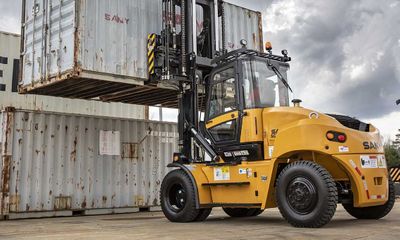
11 Safety Tips on Operating a Forklift
11 Forklift Safety Tips The forklift is also called a lift truck, is one of the ...
Learn more
22 Jan , 2025
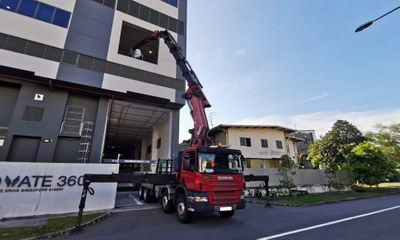
What are the other LE (Lifting Equipment) Certs in Singapore?
In Singapore, the rentals of lifting machines and lifting gears such as lorry cr ...
Learn more
22 Jan , 2025
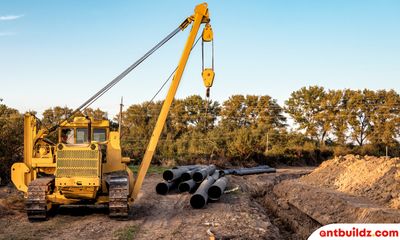
Understanding the Role of Crawler Cranes in Construction
Crawler cranes stand tall as towering giants in the construction industry, epito ...
Learn more
22 Jan , 2025
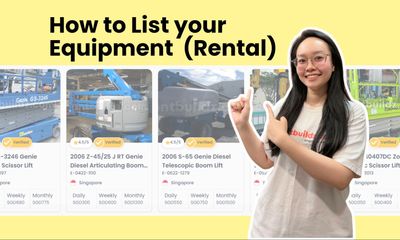
Step-by-Step Guide: How to List Your Rental Equipment on Antbuildz.com
As technology evolves, the way pricing is discovered has drastically changed. Wh ...
Learn more
22 Jan , 2025